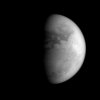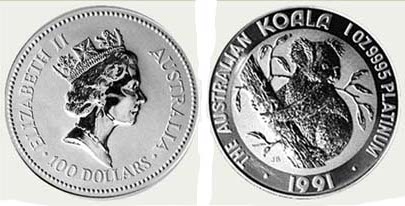August 22 2005

Dawn at the Huygens Site
The dark terrain, presumably lowland, seen here does not extend much farther south than about 30 degrees South. The successful Huygens probe landed in such a region.
The bright region toward the right side of Titan's disk is Xanadu. This area is thought to consist of upland terrain that is relatively uncontaminated by the dark material that fills the lowland regions.
Near the moon's south pole, and just eastward of the terminator, is the dark feature identified by imaging scientists as the best candidate (so far) for a past or present hydrocarbon lake on Titan (see Clouds in the Distance). Farther east of the lake-like feature, bright clouds arc around the pole. These clouds occupy a latitude range that is consistent with previously-seen convective cloud activity on Titan.
Titan is Saturn's largest moon, at 5,150 kilometers (3,200 miles) across.
The image was taken with the Cassini spacecraft narrow angle camera on July 7, 2005, at a distance of approximately 1.3 million kilometers (800,000 miles) from Titan and at a Sun-Titan-spacecraft, or phase, angle of 60 degrees. The image was obtained using a filter sensitive to wavelengths of infrared light centered at 938 nanometers. The image scale is 7 kilometers (5 miles) per pixel.
On Aug. 22, the Cassini spacecraft flew by Titan at approximately 3,669 kilometers (2,280 miles) above the moon's surface.
Making its first return to Titan since April 16, the spacecraft continued studying the moon's complex atmosphere. It hunted for stratospheric compounds, including water, and continued to study cloud formation and evolution.
The spacecraft returned high-resolution images of Titan's high southern latitudes and had a rare opportunity to study the interaction between Titan and the magnetosphere of Saturn in an exotic region.






